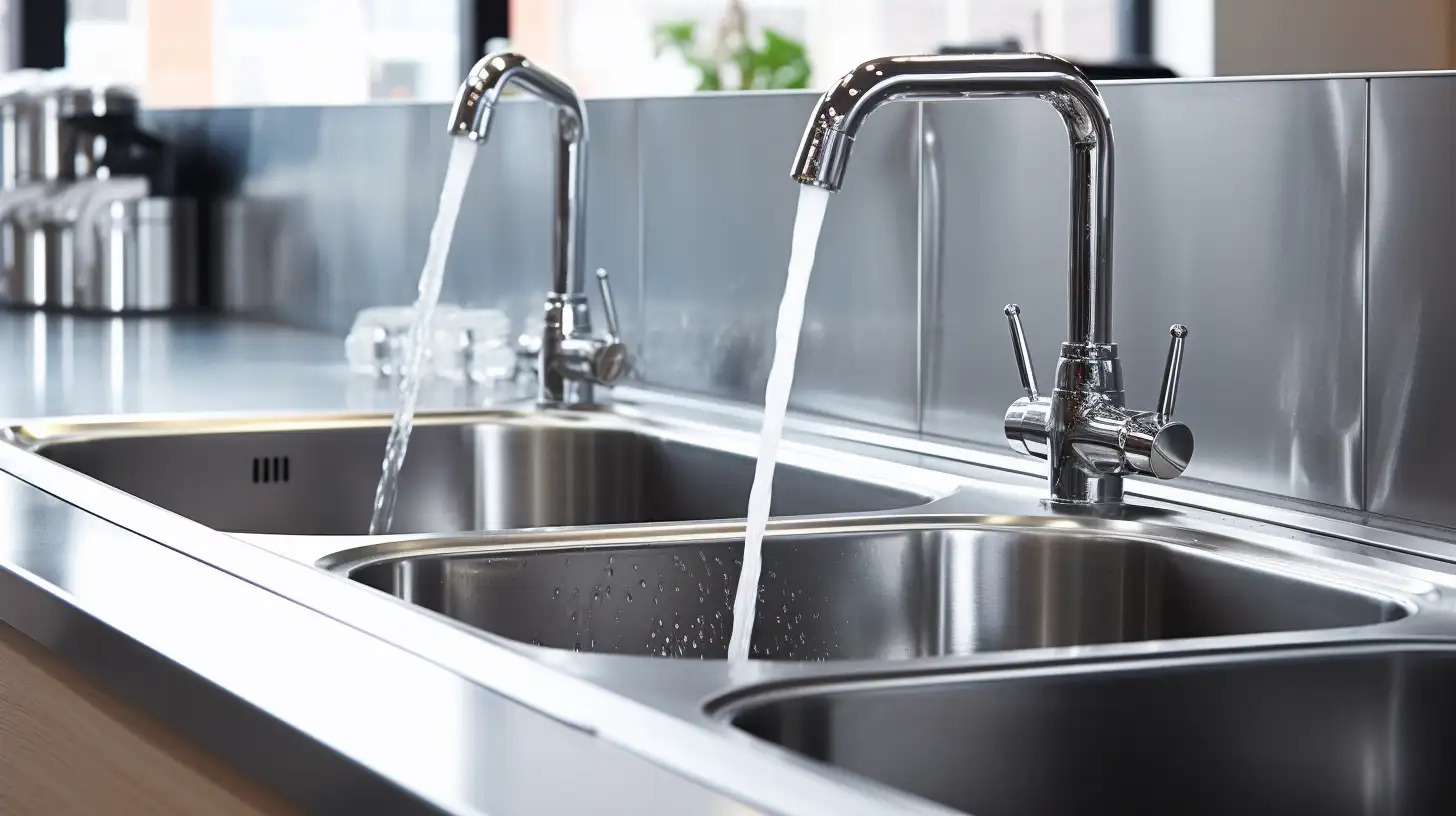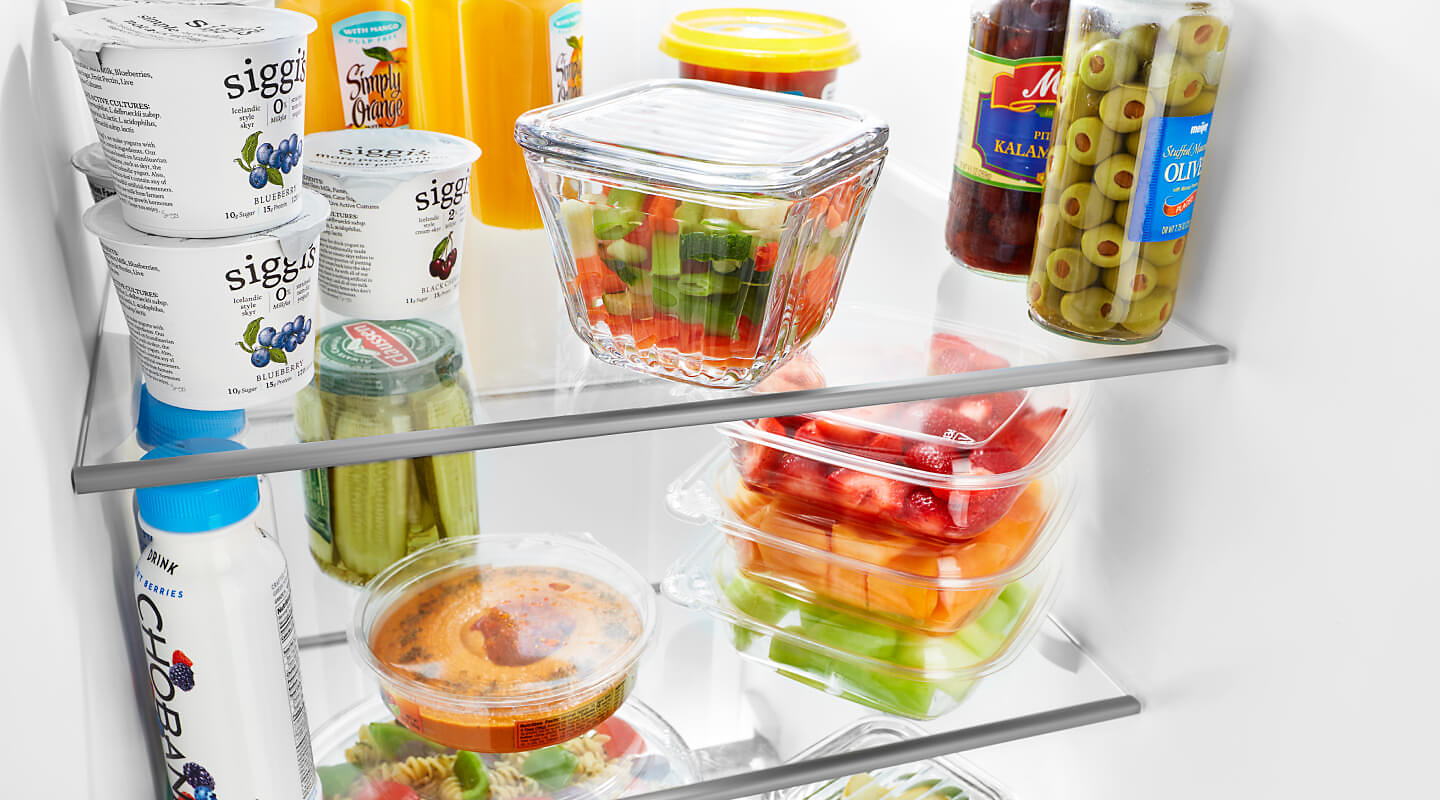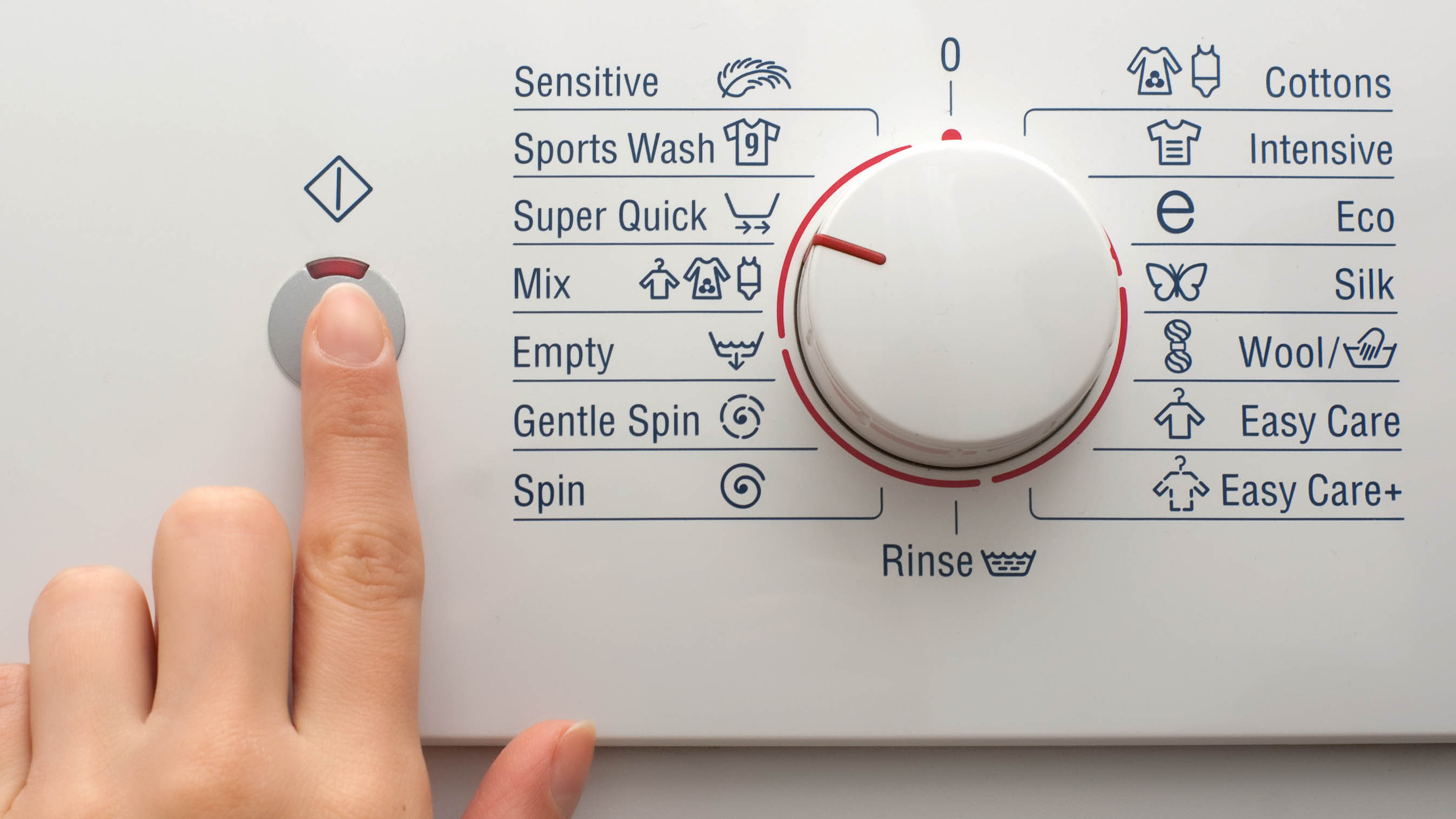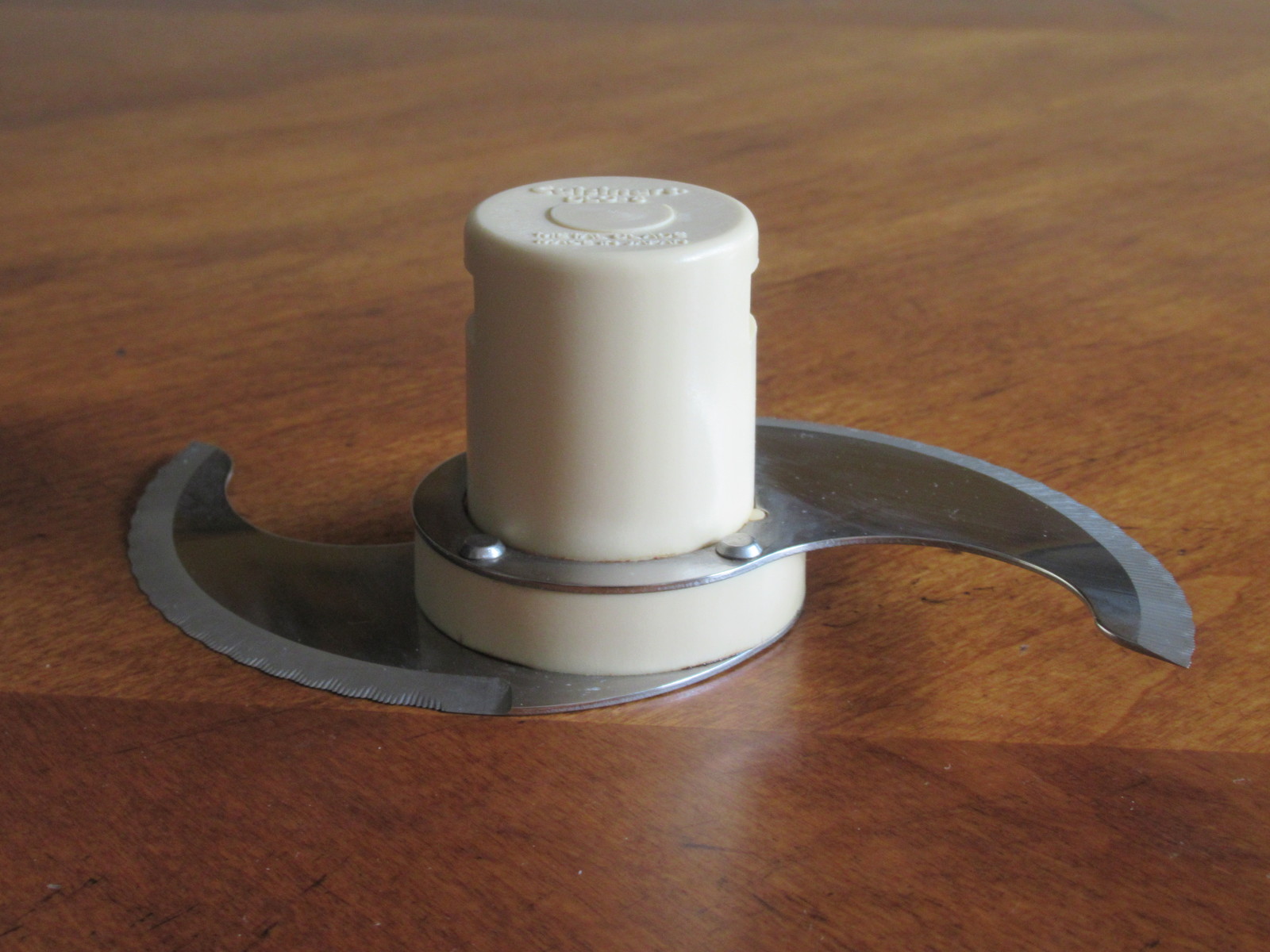Home>Articles>In Which Type Of Sink Should A Food Handler Wash His Or Her Hands


Articles
In Which Type Of Sink Should A Food Handler Wash His Or Her Hands
Modified: January 5, 2024
Discover the importance of hand hygiene for food handlers and which type of sink is best for washing hands. Read more articles on this essential topic.
(Many of the links in this article redirect to a specific reviewed product. Your purchase of these products through affiliate links helps to generate commission for Storables.com, at no extra cost. Learn more)
Introduction
Hand hygiene is a vital aspect of food handling, essential for preventing the spread of foodborne illnesses. Proper handwashing can significantly reduce the risk of contamination and ensure the safety of both the food handler and the consumers. In any food establishment, whether it be a restaurant, catering business, or a food processing facility, having the right type of sink for handwashing is crucial.
In this article, we will explore the different types of sinks commonly used in food handling, and discuss the criteria for choosing an appropriate sink for handwashing. Understanding the various options available and their specific features will help food handlers select the most suitable sink that meets their operational needs and meets the required health and safety standards.
So, why is handwashing so important in food handling? When food handlers engage in food preparation and handling activities, their hands can become contaminated with bacteria, viruses, and other harmful pathogens. These pathogens can be present on the skin, under the nails, or in the crevices of the fingers. If the food handler does not effectively remove these pathogens through proper handwashing, they can easily transfer them to the food, leading to foodborne illnesses.
Proper handwashing involves using warm water, soap, and scrubbing the hands for at least 20 seconds, covering all surfaces including the palms, back of hands, fingers, and nails. It is essential to rinse off the soap completely and use a single-use paper towel or a hand dryer to dry the hands thoroughly. This process ensures the removal of pathogens and reduces the risk of cross-contamination.
Now let’s explore the different types of sinks commonly used in food handling and the key criteria to consider when selecting an appropriate sink for handwashing.
Key Takeaways:
- Proper hand hygiene is crucial in food handling to prevent the spread of foodborne illnesses. Choosing the right sink, such as stainless steel or porcelain, ensures durability, hygiene, and compliance with health regulations.
- Plastic sinks offer portability and cost-effectiveness for smaller food establishments. Consider other types like epoxy resin or wall-mounted sinks to address specific needs and design preferences in specialized food handling environments.
Read more: At Which Sink Should Garbage Containers
Importance of Handwashing in Food Handling
Handwashing is a critical practice in food handling as it plays a crucial role in preventing the spread of foodborne illnesses. Maintaining proper hand hygiene reduces the risk of cross-contamination and ensures the safety of both the food handlers and the consumers.
Food handlers come into contact with various types of bacteria, viruses, and other contaminants during the course of their work. These harmful pathogens can be present on surfaces, utensils, or even on the food itself. When food handlers touch their face, hair, or other parts of their body, they can transfer these pathogens onto their hands. If proper handwashing is not performed, these pathogens can be easily transferred to the food, resulting in the transmission of foodborne illnesses.
Effective handwashing removes pathogens from the skin and helps prevent the spread of bacteria such as Salmonella, Escherichia coli (E. coli), Norovirus, and many others commonly associated with foodborne diseases. It also plays a pivotal role in preventing the spread of viruses like the flu, colds, and other respiratory infections.
Handwashing is particularly crucial before and after performing specific tasks in food handling. Prior to starting any food preparation, it is essential for food handlers to thoroughly wash their hands to ensure they are starting with clean hands. This removes any potential pathogens from their hands, reducing the risk of cross-contamination during food preparation.
Throughout the food handling process, handwashing should be performed regularly, especially after handling raw meats, poultry, or seafood. These raw products can carry harmful bacteria, such as Campylobacter or Staphylococcus aureus, which can cause foodborne illnesses if not properly eliminated through handwashing.
Additionally, washing hands after using the restroom, sneezing or coughing, handling waste, or any other activities that may introduce pathogens onto the hands, is crucial to prevent the spread of contamination.
Proper handwashing requires following specific steps to effectively remove pathogens. Using warm water and soap, lathering the hands thoroughly, and scrubbing all surfaces, including the palms, back of hands, fingers, and nails for at least 20 seconds, is essential. Rinse off the soap completely and dry hands with a single-use paper towel or a hand dryer to eliminate residual moisture where pathogens can thrive.
By consistently practicing proper handwashing techniques, food handlers can significantly reduce the risk of foodborne illnesses, protect their health, and ensure the safety of the food they prepare, ultimately safeguarding the consumers they serve.
Types of Sinks Commonly Used in Food Handling
In food handling environments, various types of sinks are commonly utilized for different purposes. When it comes to handwashing, it is important to choose a sink that is not only functional but also meets health and safety regulations. Let’s explore the different types of sinks commonly used in food handling:
- Stainless Steel Sinks: Stainless steel sinks are a popular choice in commercial food establishments due to their durability, resistance to corrosion, and ease of cleaning. These sinks are hygienic, as they have a non-porous surface that does not harbor bacteria. They are available in various sizes and configurations to accommodate different kitchen layouts and operational needs.
- Porcelain Sinks: Porcelain sinks are another commonly used option in food handling facilities. These sinks have a smooth, glossy surface that is easy to clean and maintain. However, they may be more prone to chipping or cracking compared to stainless steel sinks. It is important to choose a high-quality porcelain sink with a durable construction to ensure longevity in a food handling environment.
- Plastic Sinks: Plastic sinks are often used in smaller food establishments, such as food trucks or temporary setups, due to their lightweight and portable nature. These sinks are typically made from durable plastic materials, such as polypropylene, which is resistant to stains and chemicals. Plastic sinks are cost-effective and easy to install, making them a practical choice for temporary or mobile food handling operations.
- Other Types of Sinks: In addition to stainless steel, porcelain, and plastic sinks, there are other types of sinks that may be suitable for specific food handling needs. For example, epoxy resin sinks are resistant to chemicals and heat, making them ideal for laboratories or food processing facilities. Wall-mounted sinks are space-saving options commonly used in compact kitchens. Each type of sink has its own advantages and considerations, so it is important to evaluate the specific requirements of the food handling operation before making a decision.
When selecting a sink for handwashing, it is essential to consider factors such as durability, hygiene, size, and ease of cleaning. The sink should comply with local health regulations and be designed to facilitate proper handwashing techniques. Having an adequate number of sinks available in convenient locations throughout the food handling area ensures that food handlers can easily access them for regular handwashing.
By understanding the different types of sinks commonly used in food handling, food establishment owners and managers can make informed decisions and choose the most suitable sink that meets their operational needs while promoting proper hand hygiene.
Criteria for Choosing an Appropriate Sink for Handwashing
When it comes to selecting an appropriate sink for handwashing in a food handling environment, there are several important criteria to consider. Ensuring that the chosen sink meets these criteria is crucial for maintaining proper hand hygiene and compliance with health and safety regulations. Here are the key factors to evaluate when choosing a sink for handwashing:
- Size and Configuration: The size and configuration of the sink should be suitable for the specific food handling operation. It should be large enough to allow for effective handwashing, with ample space to comfortably lather and rinse hands. The sink should also have a configuration that fits well within the available space and workflow of the kitchen or food handling area.
- Durability and Hygiene: The sink material should be durable and easy to clean to ensure long-term functionality and hygiene. Stainless steel sinks are a popular choice as they are resistant to corrosion and have a non-porous surface that does not harbor bacteria. Porcelain sinks can also be a good option if they are of high quality and less prone to chipping or cracking.
- Accessibility: It is important to have sinks conveniently located throughout the food handling area to promote regular handwashing. Sinks should be easily accessible for all staff members, and there should be an adequate number of sinks available to avoid overcrowding and long wait times.
- Handwashing Station Design: Choosing a sink that is part of a well-designed handwashing station can enhance the efficiency and effectiveness of handwashing. A well-designed handwashing station includes features such as foot-operated faucets, hands-free soap dispensers, and hand dryers or disposable towels within easy reach.
- Compliance with Regulations: It is essential to choose a sink that complies with local health and safety regulations. Health codes may specify requirements such as the number of sinks needed for a specific food handling area, the presence of hot water, the use of specific materials, or the inclusion of certain features like splash guards or signage.
- Maintenance and Repair: Consider the ease of maintenance and repair for the chosen sink. The sink should be designed in a way that makes it easy to clean and maintain. Additionally, selecting a sink from a reputable manufacturer with good customer support ensures that any repair or maintenance needs can be addressed promptly.
By carefully considering these criteria when choosing a sink for handwashing, food establishment owners and managers can create an environment that promotes proper hand hygiene, complies with regulations, and ensures the safety of both the food handlers and the consumers.
Stainless Steel Sinks
Stainless steel sinks are widely regarded as one of the top choices for handwashing in food handling environments. These sinks are known for their durability, hygiene, and ease of maintenance. Here are some key features and benefits of stainless steel sinks:
- Durability: Stainless steel sinks are highly durable and resistant to corrosion, making them ideal for the demanding conditions of a food handling environment. They can withstand frequent use, exposure to water and cleaning agents, and resist damage from impacts or heavy utensils.
- Hygiene: Stainless steel has a non-porous surface, which means that it does not harbor bacteria or other contaminants. This makes stainless steel sinks more hygienic than sinks made of materials like porcelain or plastic, which may have tiny cracks or pores where bacteria can hide.
- Easy to Clean: Stainless steel sinks are straightforward to clean and maintain. The smooth, non-porous surface can be easily wiped down with soap and water, and it is resistant to stains and odors. Regular cleaning keeps the sink free from bacteria and ensures the effectiveness of handwashing.
- Resistant to Heat: Stainless steel sinks can handle hot water without warping or melting, which is crucial for achieving the desired temperature for proper handwashing. This feature allows food handlers to have access to hot water, which helps in removing pathogens effectively.
- Additional Options: Stainless steel sinks come in various sizes and configurations to accommodate different kitchen layouts and operational needs. Some sinks have extra features like integrated soap dispensers or foot pedals for hands-free operation, enhancing the overall functionality of the handwashing area.
- Aesthetically Pleasing: Stainless steel sinks have a sleek and professional appearance that can enhance the overall aesthetic of the food handling area. Their reflective surface adds a modern and clean look, which is particularly important for maintaining a positive image in front of customers in open kitchen settings.
When choosing a stainless steel sink for handwashing, it is crucial to consider factors such as size, configuration, and ease of installation. The sink should be appropriately sized to accommodate effective handwashing, and it should be installed in a location that promotes accessibility and convenience for food handlers. Additionally, it is important to ensure that the chosen sink meets health and safety guidelines and complies with local regulations regarding handwashing facilities.
Overall, stainless steel sinks provide a durable, hygienic, and aesthetically pleasing option for handwashing in food handling environments. Their ease of maintenance, resistance to corrosion, and ability to withstand daily use make them a popular choice among food establishment owners and managers who prioritize proper hand hygiene and safety.
A food handler should wash their hands in a hand sink designated for that purpose, not in a food preparation or dishwashing sink. This helps prevent cross-contamination and ensures proper hygiene.
Read more: How Does An Architect Design His/Her House
Porcelain Sinks
Porcelain sinks are a commonly used option in food handling environments due to their aesthetic appeal and ease of cleaning. These sinks, made from a ceramic material, offer several benefits that make them a popular choice for handwashing. Here are some key features and benefits of porcelain sinks:
- Aesthetic Appeal: Porcelain sinks have a classic and elegant look that can enhance the overall appearance of a food handling area. Their smooth, glossy surface adds a touch of sophistication, making them a preferred choice for establishments that prioritize aesthetics.
- Smooth and Non-Porous Surface: Porcelain sinks have a non-porous surface that is easy to clean and maintain. This feature makes it difficult for bacteria and other contaminants to penetrate the sink’s surface, improving hygiene and reducing the risk of food contamination.
- Resistance to Stains and Chemicals: Porcelain sinks are resistant to stains, making them ideal for environments where food stains and spills are common. They can also withstand exposure to cleaning chemicals without suffering damage or discoloration.
- Solid and Durable Construction: High-quality porcelain sinks are constructed to be sturdy and long-lasting. They are designed to withstand daily use and normal wear and tear, ensuring their durability in a food handling environment.
- Easy to Clean: Porcelain sinks are relatively easy to clean. Regular cleaning with mild soap and water is typically sufficient to remove dirt and grime. However, it is important to avoid abrasive cleaners or scrub brushes that can scratch or damage the sink’s surface.
- Wide Range of Designs: Porcelain sinks are available in various shapes, sizes, and styles, making it easier to find a sink that matches the specific aesthetic requirements and layout of the food handling area. Whether it’s a single basin, double basin, or farmhouse style sink, there are plenty of options to choose from.
However, it is important to note that porcelain sinks may be more prone to chipping or cracking compared to other types of sinks, such as stainless steel. Therefore, it is crucial to select a high-quality porcelain sink with a durable construction to ensure longevity in a food handling environment.
When considering a porcelain sink for handwashing, it is important to evaluate factors such as size, configuration, and ease of maintenance. The sink should be large enough to accommodate proper handwashing techniques and should be conveniently located to ensure easy access for food handlers. Compliance with local health and safety regulations is also essential.
In summary, porcelain sinks provide an aesthetically pleasing option for handwashing in food handling environments. Their smooth surface, resistance to staining, and range of design options make them a popular choice among those looking for both functionality and visual appeal in their handwashing facilities.
Plastic Sinks
In certain food handling environments, plastic sinks are a practical option for handwashing. These sinks are lightweight, portable, and cost-effective, making them suitable for smaller food establishments or temporary setups. Here are some key features and benefits of plastic sinks:
- Portability: Plastic sinks are designed to be lightweight and portable, allowing for easy installation and relocation as needed. They are often used in mobile food trucks or temporary food service setups where flexibility and portability are essential.
- Cost-Effective: Plastic sinks are generally more affordable than other types of sinks, such as stainless steel or porcelain. This makes them a budget-friendly option for smaller food establishments or those with limited financial resources.
- Durability: Despite being lightweight, plastic sinks are designed to be durable and resistant to impacts. They are made from sturdy plastic materials, such as polypropylene, which can withstand daily use and normal wear and tear.
- Resistance to Stains and Chemicals: Plastic sinks are typically resistant to stains and chemicals, making them easier to clean and maintain. They can withstand exposure to cleaning agents without suffering damage or discoloration.
- Easy Installation: Plastic sinks are relatively easy to install and set up. They often come pre-assembled or with simple instructions for quick installation. This can be advantageous for businesses that require a temporary or portable handwashing solution.
- Low Maintenance: Plastic sinks require minimal maintenance. Regular cleaning with soap and water is usually sufficient to keep the sink clean and free of contaminants. However, it is important to avoid abrasive cleaners that can scratch or damage the plastic surface.
However, it is important to note that plastic sinks may not have the same level of durability and long-term performance as stainless steel or porcelain sinks. They may be more prone to scratching, cracking, or discoloration over time, especially if exposed to harsh conditions or heavy use.
When considering a plastic sink for handwashing, it is important to evaluate factors such as size, configuration, and compliance with health and safety regulations. The sink should be appropriately sized to ensure proper handwashing and conveniently located for easy access. Additionally, food establishments should ensure that plastic sinks meet local health department requirements regarding handwashing facilities.
In summary, plastic sinks offer a lightweight, portable, and cost-effective option for handwashing in certain food handling environments. Their durability, resistance to stains, and ease of installation make them a practical choice for smaller establishments or temporary setups.
Other Types of Sinks
In addition to stainless steel, porcelain, and plastic sinks, there are several other types of sinks that may be suitable for handwashing in food handling environments. These sinks cater to specific needs and provide unique features. Here are some other types of sinks commonly used in food handling:
- Epoxy Resin Sinks: Epoxy resin sinks are popular in laboratory and food processing environments. They are highly resistant to chemicals, heat, and impact, making them suitable for environments where harsh substances or high temperatures are involved. Epoxy resin sinks are easy to clean and maintain, providing a hygienic solution for handwashing in specialized settings.
- Wall-Mounted Sinks: Wall-mounted sinks are space-saving options commonly used in compact kitchens or where counter space is limited. These sinks are fixed directly onto the wall, eliminating the need for a separate countertop or cabinet. Wall-mounted sinks can be ergonomic and convenient, as they allow for easy access and promote efficient handwashing practices.
- Composite Sinks: Composite sinks are made from a mixture of materials, including quartz, granite, or resin. They offer durability and resistance to scratches, stains, and heat. Composite sinks come in various colors and textures, allowing for customized and aesthetically pleasing options that can complement the overall design of the food handling area.
- Pedestal Sinks: Pedestal sinks are freestanding sinks that typically have a basin supported by a pedestal or column. While less common in food handling settings, pedestal sinks can add a touch of elegance to bathrooms or handwashing stations in upscale establishments. They are available in different styles and sizes, offering versatility in design and functionality.
When considering these other types of sinks, it is important to evaluate their suitability for a food handling environment. Factors such as durability, hygiene, accessibility, and compliance with health and safety regulations should be taken into consideration. Furthermore, understanding the specific needs and requirements of the food handling operation will help determine which type of sink best meets those needs.
Ultimately, by considering these other types of sinks, food establishment owners and managers can choose a sink that not only facilitates proper hand hygiene but also aligns with the unique demands and aesthetics of their specific food handling environment.
Conclusion
Choosing the right sink for handwashing is a crucial decision in maintaining proper hand hygiene and ensuring the safety of food handlers and consumers in a food handling environment. By considering the different types of sinks available and evaluating key criteria, food establishment owners and managers can make informed choices that align with their operational needs and health and safety regulations.
Stainless steel sinks are a popular choice due to their durability, hygiene, and ease of maintenance. They offer a sleek and professional appearance, making them suitable for various food handling settings. Porcelain sinks, on the other hand, provide an aesthetically pleasing option with their classic look and easy-to-clean surfaces. They are ideal for establishments that prioritize both functionality and visual appeal.
For smaller or mobile food establishments, plastic sinks offer portability, cost-effectiveness, and ease of installation. While they may not have the same level of durability as other types of sinks, they provide a practical solution where flexibility is needed. Additionally, considering other types of sinks, such as epoxy resin sinks, wall-mounted sinks, composite sinks, or pedestal sinks, can address specific needs and design preferences in specialized food handling environments.
Regardless of the type of sink chosen, certain common factors should be evaluated. Size and configuration should be appropriate for effective handwashing, ensuring that food handlers have sufficient space and accessibility. The chosen sink should also comply with health and safety regulations, promoting hygiene and compliance with local requirements. Maintenance and durability should also be considered to ensure the sink has a long lifespan and can withstand the demands of daily use.
In conclusion, selecting the right sink for handwashing is crucial for maintaining proper hand hygiene in food handling environments. By considering the different types of sinks, evaluating key criteria, and ensuring compliance with regulations, food establishment owners and managers can create an environment that promotes safe food handling practices, protecting the health of both the food handlers and the consumers they serve.
Frequently Asked Questions about In Which Type Of Sink Should A Food Handler Wash His Or Her Hands
Was this page helpful?
At Storables.com, we guarantee accurate and reliable information. Our content, validated by Expert Board Contributors, is crafted following stringent Editorial Policies. We're committed to providing you with well-researched, expert-backed insights for all your informational needs.















0 thoughts on “In Which Type Of Sink Should A Food Handler Wash His Or Her Hands”